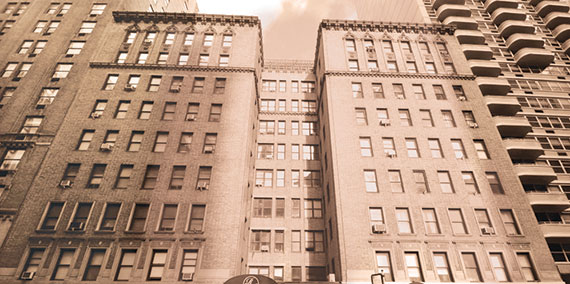Trending
This month in real estate history

1969: Apartment-to-office conversions ok’d
Manhattan property owners were granted the OK to transform residential apartments into office suites on a unit-by-unit basis, as commercial tenants in Midtown clamored for more space, 46 years ago this month.
Prior to the ruling by the city’s Board of Standards and Appeals, landlords could only convert apartments to office use one floor at a time, and the office space had to be below the residential floors.
The change came at a point during a commercial boom, when office tenants in Midtown paid landlords more per square foot than residential tenants.
A city analysis at the time found 115 apartments in buildings, including 135 East 50th Street, that were occupied illegally by office tenants, contrary to zoning code. The BSA ruling overturned regulations that prohibited offices from being on the same floor as a residential apartment, even if the building was in a commercial district.
1928: NY realty pros say city immune to downturn
Real estate professionals said the New York City market would not fall victim to the boom and bust cycles that were starting to impact land values in other regions of the United States, 87 years ago this month.
Louis Tishman, a member of one of the city’s leading development families, said, “No matter what levels real estate valuations may reach in New York City, there will never be a [bubble] in Manhattan real estate.”
Tishman, a vice president at Tishman Realty and Construction, continued, “What would be wild speculation elsewhere is simply a sane, sound investment in New York.”
Even after the collapse of the financial markets in October 1929, leading brokers kept up a positive public face. Joseph P. Day, an influential deal maker, wrote an opinion piece in January 1930 that conditions remained healthy, and the city had not experienced a “boom.”
“The real estate symptoms I perceive for the coming year are healthy and not feverish,” he said, citing the city’s population growth as a driving factor.
One year later, broker Lawrence Elliman predicted that land values would rise over the next decade, although he acknowledged that it would be slow at first.
But just months later, one insider’s attitude was less sanguine. Broker Edgar Levy, speaking at a meeting of the Real Estate Board of New York in April 1931, said the city was suffering from oversupply.
“I am sure that more houses, apartments and office buildings were being planned in 1929 and 1930 than could possibly have been filled even if the boom had continued,” Levy, president of a prominent firm at the time that bore his name, told the group.
1907: Record retail rent on 34th Street
A growing drug store chain signed a retail lease that set a record on West 34th Street, 108 years ago this month.
 The druggist, William B. Riker & Son, signed the lease with the department store Bonwit Teller & Co., to pay about $1,100 per front foot per year for the ground floor and lower level at 13-15 West 34th Street, just west of Sixth Avenue.
The druggist, William B. Riker & Son, signed the lease with the department store Bonwit Teller & Co., to pay about $1,100 per front foot per year for the ground floor and lower level at 13-15 West 34th Street, just west of Sixth Avenue.
Riker developed and patented hair tonics, among other products, such as Riker’s Septone, “an antiseptic hair food.”
“Front foot” was a measurement used around the turn of the century, calculated by dividing the annual rent by the street frontage. The yearly rent payment was $43,000 per year, or about $7 per square foot for the ground floor, today measured at a bit more than 6,000 square feet.
By way of comparison, tenants on the west side of Broadway south of 42nd Street were paying about $800 per front foot in rent.
Bonwit Teller originally planned to occupy the location itself, but chose to rent it out.
The retail district along 34th Street between Fifth and Seventh avenues surged following the 1902 opening of R. H. Macy & Company’s mega department store on Broadway between 34th and 35th streets.





